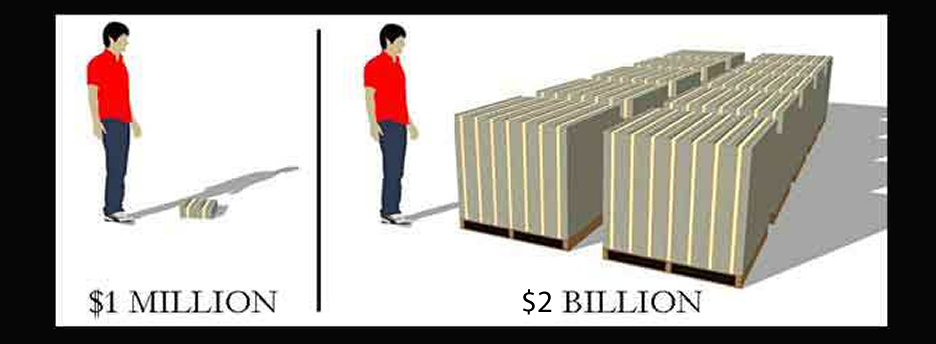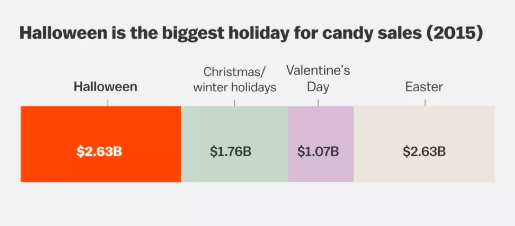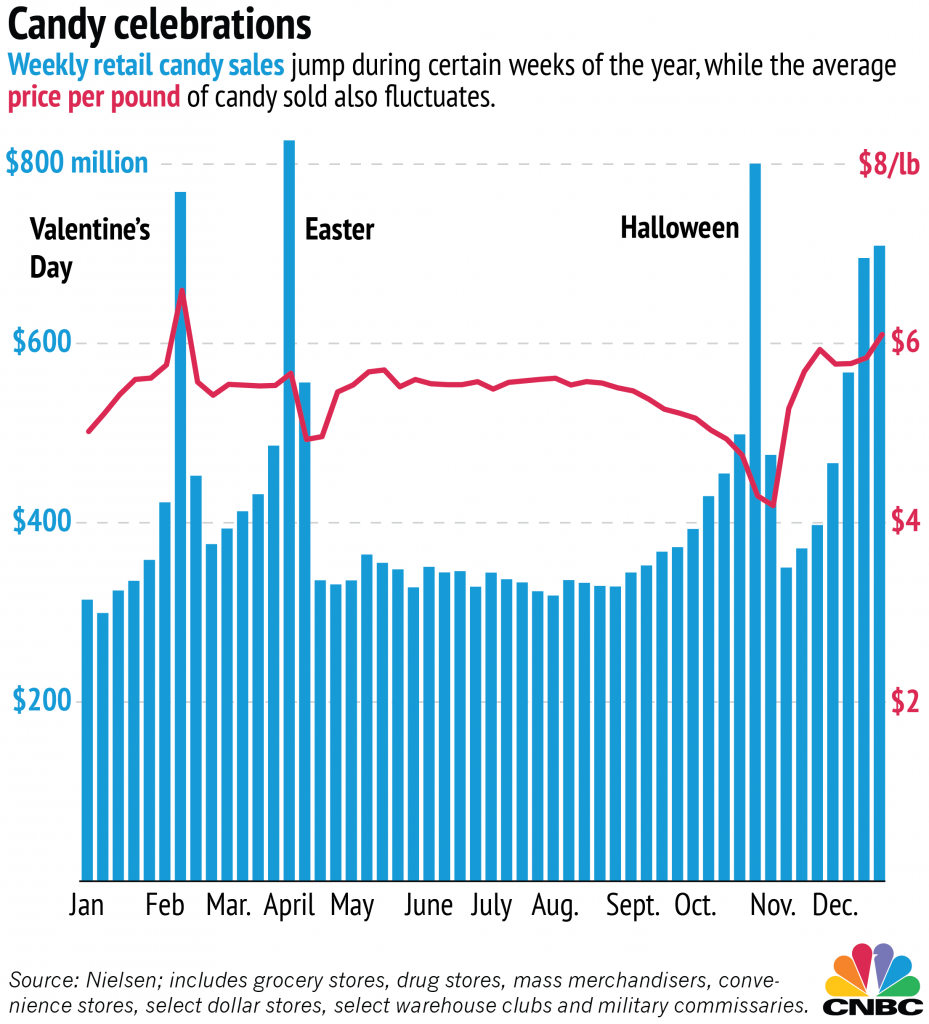By Gowri Somayajula
Imagine this. Pumpkins, skeletons and spider webs. All in a mere Target. But come November, these will all disappear in a flourish, only to be replaced by turkeys and cornucopia. And then stockings for Christmas, with 15 dollar trees that are plastic and can be stored easily (I have one, I should know). And then hearts for Valentine’s day, and in what seems like an inescapable long stretch: we have July Fourth wrapping up the season in beautiful Reds, Blues and Whites. But you know what the root of all evil is? The candy industry. Why you may ask? Because every single holiday revolves around candy. You probably can’t imagine a time when you weren’t handed M&Ms for Halloween or sweet hearts for Valentine’s Day or even candy canes for Christmas! And I mean it. The candy industry is worth around $35 billion each year. The average American consumes around 24 pounds of candy. 600 million pounds of candy (or if you like tons better: that’s 300,000 tons) are sold during just Halloween. And if that imagery doesn’t work imagine eleven Statue of Liberties weighed together. This rounds to about $2 billion of candy in just one night.


Source: National Confectioners Association (Yes it absolutely shocks me that this exists).
According to this Vox image (from an article written in 2018) American holidays drive up candy consumption. By the tons. It’s almost as though candy companies have settled into this comfortable yearly cycle (March through to February). Holiday candy consumption makes up around 22 percent of this 35 billion dollar industry. Candy sales jump instantly around these holidays.

With food companies spending as much as they do on research and development, trying to find tastes that leave consumers wanting more (some spending around $1 Billion), it comes as no surprise that where these companies succeed is in their advertising and marketing. Candy has become cheaper, almost $3 per pound of candy.. It is no longer an exclusive treat in the same way it used to be in the 1950s. This rise in affordability can also be linked to the rise in sugar consumption. Children consume 20% more sugar today that they used to in the 1970s. I can’t even really say there’s any certain way to stop this. We cannot expect to make new traditions overnight. But we need to change the power these companies do have. For the greater good.
